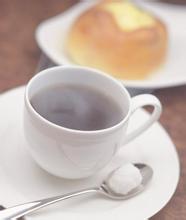Yega Fischer, Ethiopia
Yega Xuefei's grading system is not based on the number of eyes, but on the proportion of defective beans in the total number of raw beans. Commonly seen are wash G2 and sun G3 Yega Chuefei, G1 is the highest grade, Yega Xuefei, which has the lowest defect rate and the best quality, can be rated as Grade 1 only after hand selection. In the northern part of the Great Rift Valley, a series of lakes are scattered, inlaid like pearls in the Horn of Africa. Lake Turkana stretches from Kenya to Ethiopia. This is not only the cradle of mankind, but also the cradle of coffee. We will not forget that Africa is the hometown of coffee. Coffee trees are likely to be found in Ethiopia's KAFFA province. Later, batches of slaves were sold from Africa to Yemen and the Arabian Peninsula, and coffee was taken everywhere along the way. To be sure, Yemen started growing coffee in the 15th century or earlier. Although Arabia had the busiest port city in the world at that time, it banned the export of any seeds. This barrier was finally broken through by the Dutch, and in 1616, they finally smuggled the surviving coffee trees and seeds to the Netherlands and began to grow them in greenhouses.

Important Notice :
前街咖啡 FrontStreet Coffee has moved to new addredd:
FrontStreet Coffee Address: 315,Donghua East Road,GuangZhou
Tel:020 38364473
- Prev

What is the ratio of coffee powder to water?
Generally use 10 grams or more of powder, if the powder is too little, it may be because of water flow and other problems, extraction time is relatively short, extraction time is incomplete, so it is generally more than 10 grams of powder, sometimes can be used about 13 grams is not too big a problem. The amount of water we usually call 1:1 is actually 1 gram of powder and 1 ml of water. In fact, it cannot be compared strictly, but because of the figures.
- Next

Italian Coffee Machine & usage of #160; structure Coffee Bean
Italian (high pressure pump) coffee maker: today, with the integration of mixed milk coffee based on Italian coffee, the market of traditional American coffee drip filter is becoming more and more.
Related
- Does Rose Summer choose Blue, Green or Red? Detailed explanation of Rose Summer Coffee plots and Classification in Panamanian Jade Manor
- What is the difference between the origin, producing area, processing plant, cooperative and manor of coffee beans?
- How fine does the espresso powder fit? how to grind the espresso?
- Sca coffee roasting degree color card coffee roasting degree 8 roasting color values what do you mean?
- The practice of lattes: how to make lattes at home
- Introduction to Indonesian Fine Coffee beans-- Java Coffee producing area of Indonesian Arabica Coffee
- How much will the flavor of light and medium roasted rose summer be expressed? What baking level is rose summer suitable for?
- Introduction to the characteristics of washing, sun-drying or wet-planing coffee commonly used in Mantenin, Indonesia
- Price characteristics of Arabica Coffee Bean Starbucks introduction to Manning Coffee Bean Taste producing area Variety Manor
- What is the authentic Yega flavor? What are the flavor characteristics of the really excellent Yejasuffi coffee beans?

